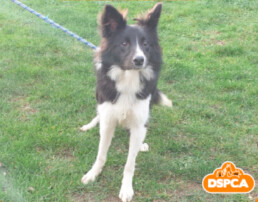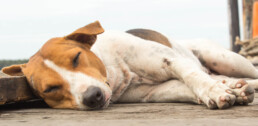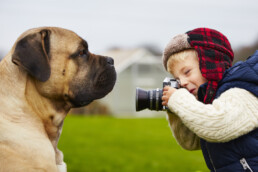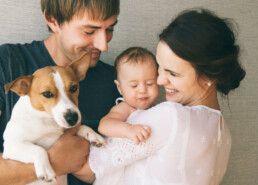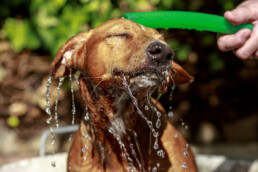How to protect your dog against ticks and fleas
Although it is impossible to completely keep ticks and fleas at bay, there are some steps you can take to help minimise their contact with your pet.
Fleas
There are a few things you can do to reduce the chances of your pet getting fleas:
- Frontline – You can use this treatment from Frontline to prevent and treat your pets against fleas. They recommend treating cats every 5 weeks and dogs every two months.
- Vacuum – One of the most overlooked areas is just vacuuming your house on a regular basis. This will reduce the number of flea eggs and larvae that are present.
- Flea shampoo – You can use flea shampoo as both a preventative measure and a cure. Bathing your pets with flea shampoo can significantly reduce the chances of infection and can go a long way to curing them of it. However, make sure you don’t do this too much as it can dry out your pets skin.
- Wash your pets bedding – It’s important to ensure all bedding, blankets or collars that your pet wears are regularly cleaned.
- Consult your veterinarian – When it comes to any treatment for your pets, always consult your vet. This will help you to understand what fleas are, what treatments are suitable for your pets and what to do in the event that your pet gets fleas.
Ticks
Dogs are very susceptible to tick bites and tick-borne diseases. Tick bites on dogs may be hard to detect. Signs of tick-borne disease may not appear for 7-21 days or longer after a tick bite, so watch your dog closely for changes in behavior or appetite if you suspect that your pet has been bitten by a tick.
To reduce the chances that a tick will transmit disease to you or your pets:
- Check your pets for ticks daily, especially after they spend time outdoors.
- If you find a tick on your dog, remove it right away.
- Ask your veterinarian to conduct a tick check at each exam.
- Talk to your veterinarian about tickborne diseases in your area.
- Reduce tick habitat in your yard.
- Talk with your veterinarian about using tick preventives on your pet.
Use a flea and tick control product
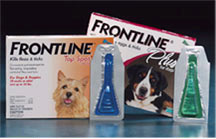 Despite your best efforts to reduce your dog's contact with ticks and fleas, you should still take measures to help protect them. Treat all dogs and cats in the household with a flea and tick control product. One untreated pet can lead to a flea infestation in the household. Flea and tick control products can help protect your dog from unexpected flea and tick sources by killing adult fleas, eggs and larvae, and all stages of ticks.
Despite your best efforts to reduce your dog's contact with ticks and fleas, you should still take measures to help protect them. Treat all dogs and cats in the household with a flea and tick control product. One untreated pet can lead to a flea infestation in the household. Flea and tick control products can help protect your dog from unexpected flea and tick sources by killing adult fleas, eggs and larvae, and all stages of ticks.
Once-a-month topical insecticides are the most commonly used flea prevention products on the market. They are applied to a small area on your pet's back, are probably the easiest product to use, and generally last the longest. Some kill fleas and ticks, and others just kill fleas, so check the label carefully. Ingredients generally include permethrin, fipronil, imidacloprid, pyriproxyfen, spinosad, metaflumizone, and selamectin.
This is the method we use with Baxter, applying the dose to an area of skin at the back of his neck, where he is unlikely to reach it should he feel the need to scratch an itch.
Consistency is key to maintaining adequate protection. Even one missed dose of your dog's monthly flea and tick control can set the stage for a flea infestation that takes months to resolve, or put your pet at greater risk of exposure to a tick borne disease. So it is important that you treat your pet and continue monthly applications throughout the rest of the year or as directed by your vet.
Meeting Sam for the first time
When we met Sam for the first time, we were still grieving over the loss of our dear Baxter.
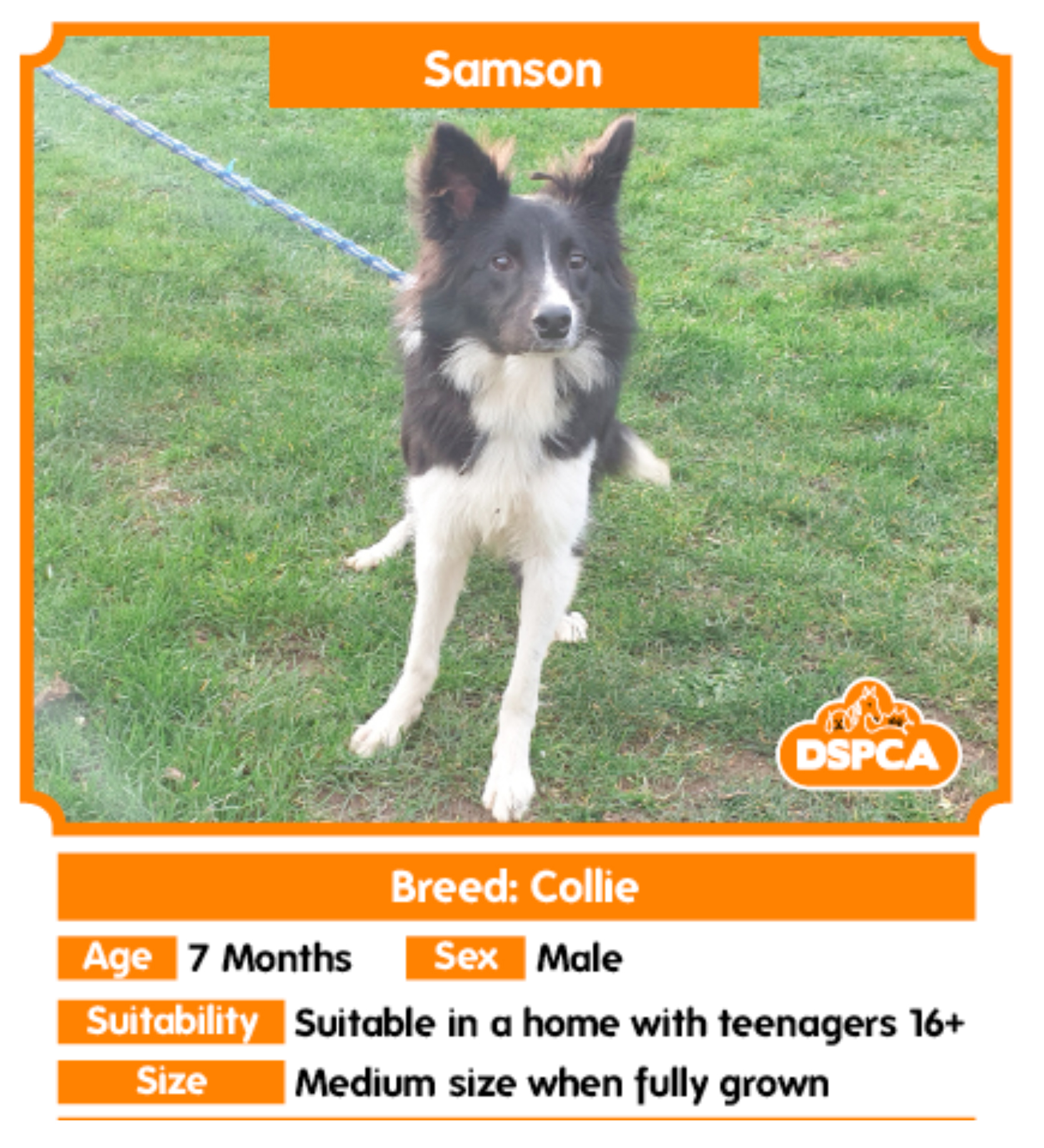 Life without Baxter has been awful. So when we saw this beautiful little boy on the DSPCA website last week, we just had to go and meet him. He needed a little coaxing to come out of his kennel and he was very nervous around us. But with patience, the assistance of one of the dog trainers and a handful of treats, he eventually came out to see us.
Life without Baxter has been awful. So when we saw this beautiful little boy on the DSPCA website last week, we just had to go and meet him. He needed a little coaxing to come out of his kennel and he was very nervous around us. But with patience, the assistance of one of the dog trainers and a handful of treats, he eventually came out to see us.
The trainer told us he had been brought to the DSPCA by a concerned family member who was worried he wasn't being looked after properly. Though he barked, his talk wagged and we were told that with patience and love, he would settle into a loyal and loving dog.
So we took him for a walk around DSPCA campus. Or rather, he took us for a walk, and in spite of his nervousness, he seemed happy enough to share twenty minutes with us. He has won our hearts!
How to help your dog through firework season
Baxter, like most dogs, finds this time of year a period of intense emotional stress brought about by the flashes and loud noises associated with fireworks.
So, we would like to share with you some of the excellent advice we received on a recent visit to the vet.
Minimizing the effect of fireworks
Up until recently, the only way of medically trying to help dogs was by the use of sedatives. However, our vet tells us that sedatives provide little if any benefit and may actually compound what is an already stressful situation.
In order to minimize the effect of fireworks on your pet, try the following advice.
- Avoid exercising your dog after dark, as this is the peak activity for fireworks.
- Ensure all curtains in the area where your pet stays are pulled shut in order to block out the flashes from fireworks.
- Turn on the radio in the room playing music at an appropriate volume so as to reduce the impact of the explosions from fireworks.
- Try no to offer sympathy to your pet. This is very hard to do, but offer sympathy may be interpreted by your dog as legitimizing their phobia.
- Do not scold or punish your dog if it shows signs of fear or anxiety.
- Provide a 'sanctuary' for your pet - a designated area where you can follow steps 2 & 3, preferably an area where your pet prefers to hide when stressed. Feed the pet in this area. The pet will recognize this area as a place of reassurance and comfort where they are less stressed by the fireworks.
Pheromone Diffusers
Our vet also suggests using a pheromone diffuser in the 'sanctuary' area. A pheromone diffuser is a plug-in diffuser similar to the room deodorants commonly used in the home. It releases into the atmosphere of the room a tiny amount of the product similar to a natural chemical produced by the bitch while feeding her pups. This has been shown to reduce anxiety, to change the way pets perceive unfamiliar environmental stimuli and to enhance social interaction.
The diffuser should be plugged in at the same height at the pet and should not be positioned behind furniture. Ideally, it should be plugged in 2 weeks in advance of the event. It should be left plugged in 24 hours a day and never unplugged, even for part of the day.
If you have any concerns about your pet during firework season, please contact your vet.
O'Briensbridge Parteen Weir loop walk, Co. Clare

A moderate walk
Distance: 5km
Estimated time: 1.5 hrs
Terrain: Flat, firm terrain with riverside paths and canal banks.
O'Brien's Bridge or O'Briensbridge is a village in east County Clare, Ireland, on the west bank of the River Shannon. It is named for the bridge across the Shannon at that point, built by Turlough O'Brien in 1506.
The short 5km loop is marked with green arrows and travels upstream along the Shannon to the Parteen Weir Hydro Dam before returning to O'Briensbridge via the Headrace Canal.
The loop is part of the network of National Looped Walks and is marked in both directions using the standard National Looped Walk directional arrows.
The loop starts and finishes at the trailhead which is located on the bank of the river Shannon at the Riverside Park in the village of O'Briensbridge, approximately 14km from Limerick City and just off the R463.
The trailhead car park is located close to a variety of local shops, pubs, restaurants and guest accommodation.
A Heritage Guide to the walk is available to download from http://obriensbridge.com.
How to take professional-looking pet portraits
We all like to photograph our pets and taking professional-looking portraits does not need to be as complicated as we think. Although it does take time and patience, it does not necessarily need a lot of expensive equipment.
Over the next few weeks, I'll be posting a series of lessons on how to photograph pets. Each one will look at a different aspect of pet photography. Here's an idea of what's to come:
Part 1: Photographic Equipment - selecting a camera; using auto and manual focus; lighting and accessories.
Part 2: Animal Behaviour - understanding animal behaviour; personal space/fear circle of pets; techniques to use and avoid during a photographic session.
Part 3: Natural Portraits - controlling natural light using fill-flash and reflectors.
Part 4: Studio Portraits - selecting suitable backgrounds; basic lighting set-ups; importance of eye contact.
Part 5: Action Portraits - photographing animals in motion; shutter speeds; background details.
Part 6: Digital Imaging Editing and Printing - basic image editing; printing your images.
I will also be posting some photographic exercises for you to try yourself.
The art of any form of portrait photography is to capture the character and personality of your subject. So you will need to encourage your pet to relax and behave naturally in front of the camera. Sessions should be kept short, because animals get bored quickly and once that happens you will have to put the camera away until another day. Also, as you cannot ask your pet to say 'cheese', you will have to resort to other ways and means to encourage them to 'smile' for the camera. But, above all, whatever approach you adopt when photographing your pet remember their safety and welfare must always come first.
The aim of this series is to give you, as a pet owner, the inspiration and knowledge to take stunning photographs of your pet, however inexperienced a photographer you are.
How to prepare your dog for a new baby
There’s so much to think about when you’re getting ready for a baby, but if you have a dog it’s worthwhile preparing early to ensure a safe and happy start to the relationship between your pet and your new baby.
Solve existing behavioural issues
Finding the time to do behavioural training might be difficult after baby comes, as you won’t want to be dealing with tough behaviour issues with your dog while also trying to look after a new baby. Behaviour that seems harmless now, such as your dog jumping up on you, may become dangerous if you are heavily pregnant or holding a brand new baby in your arms. If your dog has serious behaviour issues such as aggression, you may need to consult a professional dog behaviourist to help solve these issues before the arrival of your new baby.
Safe Walks
Ensure your dog walks well on a lead, without pulling, tugging you or lunging unexpectedly. This will make it easier for you to keep taking your dog out on walks if you have a pram to manage as well. So, why not try some practice walks with the pram before baby arrives, to help your dog get used to it.
Socialise
Begin socialising your dog with babies and young children, and rewarding it for any positive interactions with them. If your dog hasn’t been socialised with children much, you will need to be very cautious when you get started and keep your dog on a lead. You may also need to put a muzzle on your dog if necessary.
Baby Sounds
Desensitise your dog to baby noises beforehand so they are unfazed by the real thing when it comes along. Play recordings of babies crying, laughing and screaming to your dog on a regular basis at all times of the day. Start at a low volume, then increase the volume slowly in small increments only when your dog is acting calmly and not stressed. Reward your dog for calm behaviour while these sounds play.
Baby's sleeping space
It is important that you make the nursery off-limits to your dog. Through careful and consistent training, you should be able to condition your dog into understand this is a place they are not allowed go without you. Once your dog understands the rules, you can let them to enter the room. But, it is important to maintain enough control to send your dog out of the room when you need to. If you find it difficult to maintain this flexibility then it’s best to keep it fully off limits.
Introducing your dog to baby
To encourage a safe and peaceful introduction, try these tips:
- Have someone bring home something that smells of your baby (such as a wrap it has been wearing), so your dog can become familiar with the scent before meeting her.
- Help your dog relax by ensuring it’s taken for a long walk and has used up some energy before the introduction.
- On arriving home from hospital, greet your dog first before introducing the baby. Remember, your dog will have missed you and will be excited to see you, so doing this will help create a calm environment.
- Make sure your dog is calm before it is allowed to come near the baby. While holding your baby, gently call your dog over and allow it to sniff baby. If there is more than one dog in the household, do this with only one dog at a time.
- Reward your dog for its calm behaviour when meeting the baby. You should do this for their first few interactions to help build a positive association.
Warning signs
Learn to read your dog’s body language for any indication that it’s not happy or comfortable in a situation. If your dog growls, has its hackles raised or bares its teeth remove the child from the situation immediately. If your dog is stressed out or fearful, this is also a warning sign. Look for things such as panting, tense body language, the dog’s tail between its legs, trembling, or the dog trying to hide or escape a situation. Pay attention to these signs and remove the child if you ever see any of them.
Finally, it is important to remember that you must always supervise all interactions between a dog and a baby or young child. Even if your dog is extremely friendly and docile, babies and young children can do unexpected things and any dog can react in a negative way if it feels scared or threatened.
If your dog gives any indication that it is frightened of or aggressive to a child, immediately separate the two and consult a qualified animal behaviourist to help resolve any issues your dog may have with the situation.
Sligo Abbey, Co. Sligo
Sligo Abbey
Abbey Street, Sligo town, Co. Sligo
Phone: +353 71 9146046
Email: sligoabbey@opw.ie
Petfriendly: Yes (dogs must be kept on a lead at all times)
Although commonly known as Sligo Abbey, the correct title for one of Sligo town's oldest surviving structures is The Convent of the Holy Cross. Sligo Abbey was built around 1252-1253 by the Norman Baron Maurice Fitzgerald , who is also credited with being the founder of Sligo. The Friars were in residence at The Convent of the Holy Cross for five turbulent centuries, until they left in 1760. A new abbey was then built in 1763 in Burton Street.
Baxter was allowed to come into the abbey with us, on condition that he was kept on a lead at all times.
Sligo Abbey is managed by the Office of Public Works, who has responsibility for the day-to-day running of over 750 National Monuments and National Historic Properties.
Admission to Sligo Abbey is from 30th March until 8th October from 10am until 6pm and costs only €3 per adult, and €1 for children, which is excellent value for money and well worth the visit.
Streedagh Strand, Co. Sligo
Map: OS Discovery series sheet no. 16
Start/Finish: Trawgar, 3km NW of Grange village and N15.
Time: 7km, about 1.5 to 2 hours
Suitability: easy, care needed on bare limestone, best enjoyed at low tide
When you arrive at Streedagh, you’ll find three kilometres of golden sand, perfect for surfing, strolls or a family picnic. Nearby at Atlantic Sheepdogs, you’ll meet some of the smartest dogs in the world!
Against the beautiful backdrop of Sligo’s Atlantic coastline, this has to be one the most amazing beach walks we've been on with Baxter. It boasts a wealth of interest, including a wedge tomb, fossils, tropical sea limestone, the Armada, a “Butter Boat”, surfing and spectacular views of Ben Bulben, Slieve League and Inishmurray.
The tide was out the day we were there, allowing us to walk the full length of the sandy beach.
How to protect your dog from heat stroke
As the warm summer weather approaches, it's important to remember that dogs are vulnerable to heat related injuries, the most dangerous of which is heat stroke, which can often prove fatal.
Heat stoke and heat exhaustion are dangerous conditions for any dog and should be avoided at all costs. Heat stroke occurs when the dog's normal body mechanisms are unable to keep body temperature within a safe range. A dog's normal body temperature is 100-102.5 degrees. A body temperature over 106 degrees is deadly.
Heat Exhaustion
Heat exhaustion, the early stages of heat stroke, occurs when the dog begins overheating. To remedy the effects of heat exhaustion, you must take immediate action to reduce the dog's body temperate and prevent the danger of heat stroke. Symptoms of heat exhaustion include diarrhea, nausea and vomiting, rapid panting, and the skin inside the ears reddening. Should you notice any of these symptoms and suspect your dog might be suffering from heat exhaustion, take immediate action by bringing your dog indoors to a cooler environment immediately, near a fan if you have one, offer some fresh water, and dampen the dampen the skin with lukewarm water and allow it to air-dry.
Heat Stroke
Signs of heat stroke include rapid panting, a bright red tongue, red or pale gums, and thick, sticky saliva. The dog may also show signs of weakness, dizziness and vomiting.
If you suspect your dog is suffering from heat stroke, remove them from the hot enviroment immediately. Wet them thoroughly with room-temperature water (do not use not ice or very cold water, as it will trigger other life-threatening conditions), and increase the flow of cool air around them with a fan.
Five Ways to Prevent Heat Stoke
So, here are five things to remember when the temperature gets high in the summer months:
- Don’t let your dog linger on hot surfaces like asphalt and cement. Being so close to the ground can heat their body quickly and can also lead to burns on sensitive paw pads. Keep walks to a minimum.
- Provide access to fresh water at all times. Make sure an outside dog has access to shade and plenty of cool water.
- Restrict exercise when temperatures soar, and do not muzzle the dog because it inhibits their ability to pant.
- Many dogs enjoy a swim, splashing in a pool, or running through a sprinkler in warmer weather can help bring body temperatures down.
- Never leave your pet in a parked car, not even if you park in the shade or plan to be gone for only a few minutes. The temperature inside of a car can reach oven-like temperatures in just minutes, often in excess of 140 degrees. That quick errand to the shops can very quickly turn into a disaster and could be fatal for your pet.
The last point is particularly important to remember. The number of times I have seen a dog left alone in a parked car at the supermarket during the warmer summer months is horrifying. If you know you have to stop by the supermarket to pick up a few groceries, please leave your dog at home. Your dog will thank you for it!
Remember: Any dog that cannot cool itself off is at risk from heat stroke!
What is the law on micro-chipping dogs?
As from 31st March 2016, it is compulsory for all dogs in the Republic of Ireland to be micro-chipped.
As a dog owner, there are three things you need to know about the new legislation:
- Your dog must be micro-chipped and registered on a government approved database by 31st March 2016.
- You must have a certificate from a government approved database to prove that your dog is micro-chipped and registered on that database.
- You must keep your contact details up to date. Any changes of ownership or of contact details, such as address and phone numbers, must be notified to that database.
If you are buying, selling or transferring ownership of a dog, you will also need to know the following:
- From 1st September 2015 all puppies must be micro shipped and registered with a government approved database by the time they reach 12 weeks of age or before they are moved from their birth home.
- It is illegal to buy or take ownership of a puppy that is not micro-chipped and registered on a government approved database and that does not have a certificate from the database to prove this.
- You must inform a government approved database when you buy, sell, take ownership or transfer ownership of a dog.
If your dog is already micro-chipped, you still need to make sure your details are stored correctly on a government approved database and that you have a certificate to prove this.


